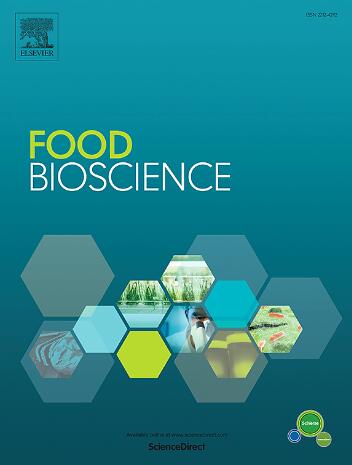Exploring the essential oil of Aroeira (Schinus terebinthifolius Raddi): chemical composition, biological potentials, and future directions
IF 4.8
1区 农林科学
Q1 FOOD SCIENCE & TECHNOLOGY
引用次数: 0
Abstract
Environmental concerns and the growing demand for natural products are driving research and increasing the search for new active ingredients extracted from native flora. Among these natural substances, essential oils (EO), composed of monoterpenes and sesquiterpenes, represent a promising alternative. Aroeira (Schinus terebinthifolius Raddi) is a native Brazilian plant renowned for its diverse compounds and biological activities. This study aimed to compile and synthesize information regarding the chemical composition of its EO, while reviewing its biological properties and toxicological aspects. The EO of Aroeira typically exhibits a complex chemical profile, with major compounds including α-pinene (8 %–44.9 %), β-pinene (15.1 %), β-myrcene (41 %), D-germacrene (4.7 %–25.0 %), and β-caryophyllene (13.8 %–35.2 %). Although widely used in traditional medicine, Aroeira may cause allergic reactions in sensitive individuals. Nevertheless, some studies have classified its derivatives as having low toxicity in assays employing rodent models. Moreover, the EO extracted from the its leaves and fruits have demonstrated antifungal, antibacterial, insecticidal, and larvicidal bioactivities, thereby emphasizing the need for further research on its application in microbial inhibition and insect control. In the food industry, Aroeira is incorporated into a variety of products—including breaded chicken, cheeses, and probiotic yogurts, as well as jams and sausages—highlighting its versatility as a natural additive. Its potential applications in agriculture, food preservation, and medicine drive the development of innovative and effective bio-solutions for more natural pest and contamination control.

山菖蒲精油的化学成分、生物学潜力及未来研究方向
环境问题和对天然产品日益增长的需求正在推动研究并增加对从本地植物中提取的新活性成分的研究。在这些天然物质中,由单萜烯和倍半萜烯组成的精油是一种很有前途的替代品。山黧豆(Schinus terebinthifolius Raddi)是一种巴西本土植物,以其多种化合物和生物活性而闻名。本研究旨在收集和综合有关其化学成分的资料,同时对其生物学特性和毒理学方面进行综述。其主要成分为α-蒎烯(8% - 44.9%)、β-蒎烯(15.1%)、β-月桂烯(41%)、d -丁烯(4.7% - 25.0%)和β-石竹烯(13.8% - 35.2%)。虽然在传统医学中广泛使用,但在敏感人群中可能会引起过敏反应。然而,一些研究在采用啮齿动物模型的分析中将其衍生物归类为具有低毒性。此外,从其叶和果中提取的EO具有抗真菌、抗菌、杀虫和杀幼虫等生物活性,因此其在微生物抑制和昆虫防治方面的应用有待进一步研究。在食品工业中,Aroeira被加入到各种产品中——包括面包粉鸡肉、奶酪、益生菌酸奶,以及果酱和香肠——突出了它作为天然添加剂的多功能性。它在农业、食品保鲜和医药方面的潜在应用推动了创新和有效的生物解决方案的发展,以更自然地控制害虫和污染。
本文章由计算机程序翻译,如有差异,请以英文原文为准。
求助全文
约1分钟内获得全文
求助全文
来源期刊

Food Bioscience
Biochemistry, Genetics and Molecular Biology-Biochemistry
CiteScore
6.40
自引率
5.80%
发文量
671
审稿时长
27 days
期刊介绍:
Food Bioscience is a peer-reviewed journal that aims to provide a forum for recent developments in the field of bio-related food research. The journal focuses on both fundamental and applied research worldwide, with special attention to ethnic and cultural aspects of food bioresearch.
 求助内容:
求助内容: 应助结果提醒方式:
应助结果提醒方式:


